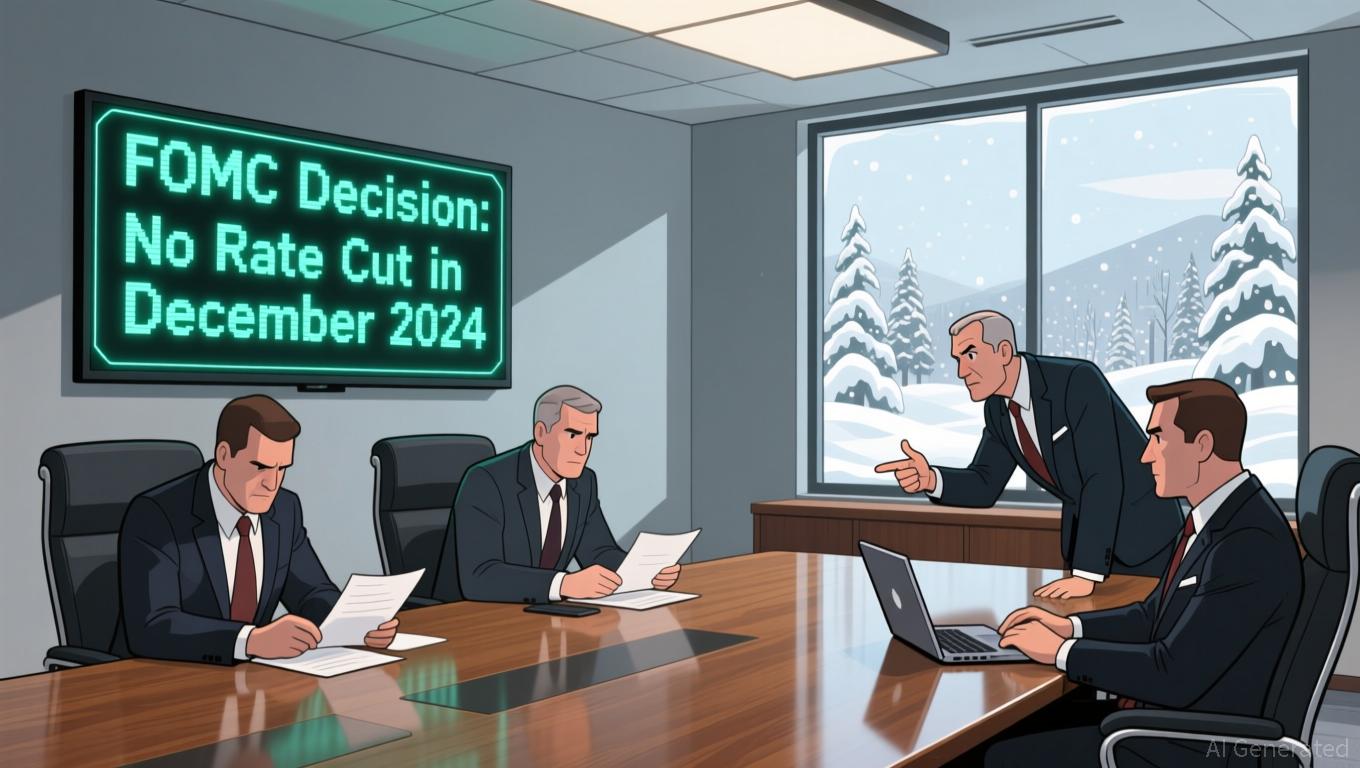Data Shortfalls and Policy Conflicts Prevent Fed from Lowering Rates in December
- The Fed’s December rate cut prospects have dimmed, with officials citing data gaps and inflation concerns, reducing the CME FedWatch probability to 32%. - Delayed BLS labor market reports left policymakers without critical metrics, fueling skepticism about justifying a cut amid internal divisions. - Officials like Christopher Waller argue for easing due to a "stall speed" labor market, while Lorie Logan and Beth Hammack caution against premature cuts risking inflation and market instability. - Markets ha
Expectations for the Federal Reserve to lower rates in December have faded sharply, as officials such as Lael Brainard indicate that additional monetary easing is unlikely due to missing key labor data and ongoing disagreements about inflation. By November 20, the likelihood of a 25-basis-point cut at the December 10 FOMC meeting

The minutes from the October FOMC meeting, made public on November 19, highlighted the central bank’s internal disagreements. Some members supported a rate cut to offset rising unemployment and slower economic growth,
Yet, opposition has become more pronounced. Dallas Fed President Lorie Logan, who does not vote this year,
Shifts in the market are already evident. Bond yields have climbed as traders adjust their outlooks, and industries that depend on low interest rates—like technology and real estate—are experiencing increased volatility
Although a December rate cut now seems unlikely,
Disclaimer: The content of this article solely reflects the author's opinion and does not represent the platform in any capacity. This article is not intended to serve as a reference for making investment decisions.
You may also like
RBI Governor Says Crypto and Stablecoins Pose “Huge Risk” To India’s Economy
Bitcoin Updates: ETF Withdrawals Reveal the Unstable Base of Crypto Treasuries
- Bitcoin's 27% price drop since October has triggered massive ETF outflows, with BlackRock's ETHA losing $421.4M in November 2025. - BitMine Immersion Technologies faces $3.7B unrealized ETH losses as crypto treasuries struggle with collapsing valuations and limited capital expansion. - Bitcoin Munari (BTCM) emerges as a Bitcoin-pegged Layer 1 blockchain with EVM compatibility, fixed 21M supply, and 2027 mainnet roadmap. - BlackRock's staked Ether ETF filing aims to disrupt treasury models by offering yie

Bitcoin Updates: Institutions Pull Out and $2 Billion Wiped Out—Is This a Crypto Catastrophe or a Strategic Market Reset?
- Bitcoin ETFs face $3.79B outflows in November, triggering a $2B liquidation crisis as prices drop 9% below $84K. - Institutional profit-taking, fading Fed rate-cut hopes, and $4.2B options expiry amplify crypto market fragility. - $120B daily market loss highlights sector vulnerability amid regulatory scrutiny and geopolitical risks under Trump. - Analysts warn ETF outflows, stalled listings, and leveraged trading pressures pose ongoing rebound risks.

Bitcoin Updates: BTC's Sharp Decline Spurs Institutional Wagers on a $200K Recovery
- Bitcoin's sharp selloff and extreme fear metrics have triggered cautious optimism among analysts and institutional investors, who see potential rebounds and long-term demand signals. - Historical patterns show market bottoms often follow Fear and Greed Index readings below 20, with institutional buyers typically stepping in during retail capitulation phases. - Despite $3.79B in Bitcoin ETF outflows, technical indicators suggest oversold conditions and potential bullish patterns, with some experts forecas
